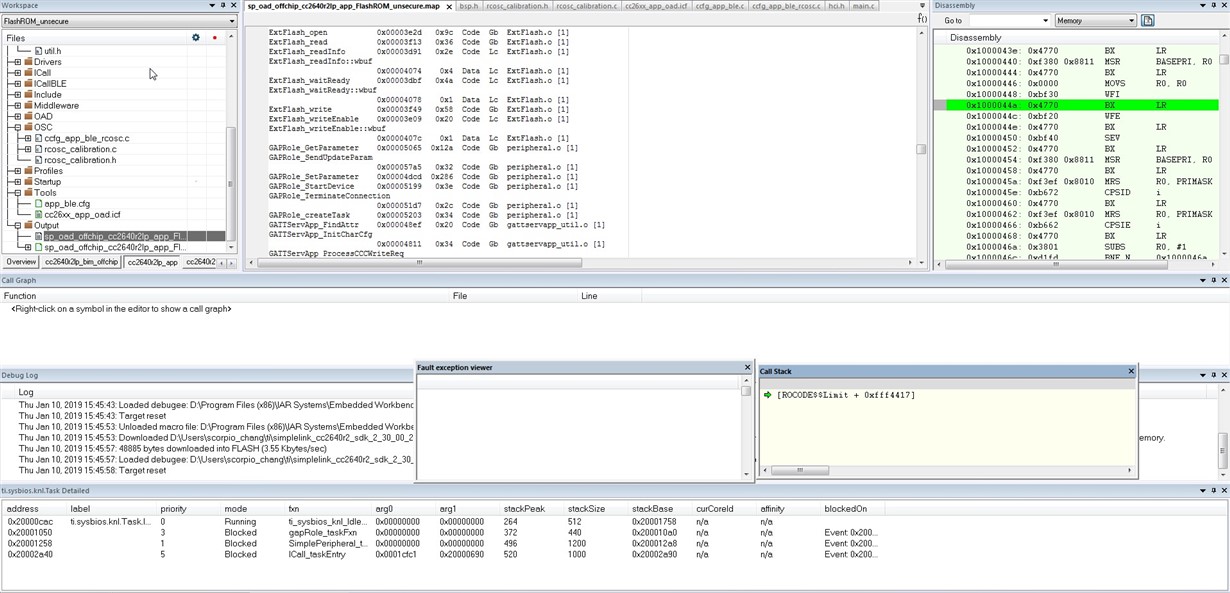Other Parts Discussed in Thread: LAUNCHXL-CC2640R2
Tool/software: TI-RTOS
SDK: simplelink_cc2640r2_sdk_2_30_00_28
project: RTOS/blestack, simple_peripheral_oad_offchip
IDE: IAR
We have two boards using CC2640R2F SOC and the same codebase to develop our product.
when I using iPhone to establish the connection with our device,...
One of them with 32khz crystal can establish the connection after advertising successfully.
The other without 32khz crystal cannot establish a connection, we have already followed Using 32-kHz Crystal-Less Mode, but still get the failure.
The device receives GAP_LINK_TERMINATED_EVENT(LL_CONN_ESTABLISHMENT_FAILED_TERM) in peripheral.c
show log as below: (attach sniffer log sa attachment)
#000003 [ 0.021 ] INFO: (simple_peripheral_oad_offchip.c:955) SimplePeripheral_init
#000004 [ 0.021 ] INFO: (simple_peripheral_oad_offchip.c:1874) 0xA4DA32067D31
#000005 [ 0.021 ] INFO: (simple_peripheral_oad_offchip.c:1875) =BD Addr
#000006 [ 0.021 ] INFO: (simple_peripheral_oad_offchip.c:1876) GAPRole Initialized
#000007 [ 0.021 ] INFO: (simple_peripheral_oad_offchip.c:1890) Advertising
#000008 [ 12.929 ] INFO: (simple_peripheral_oad_offchip.c:1918) Connected to: 0x6608D1A88643
#000009 [ 13.667 ] INFO: (simple_peripheral_oad_offchip.c:1984) Timed Out
#000010 [ 13.667 ] INFO: (simple_peripheral_oad_offchip.c:1890) Advertising
#000011 [ 13.975 ] INFO: (simple_peripheral_oad_offchip.c:1918) Connected to: 0x6608D1A88643
#000012 [ 14.141 ] INFO: (simple_peripheral_oad_offchip.c:1963) Disconnected
https://e2e.ti.com/cfs-file/__key/communityserver-discussions-components-files/538/3515.cc2640r2f_5F00_connection_5F00_fail.7z


